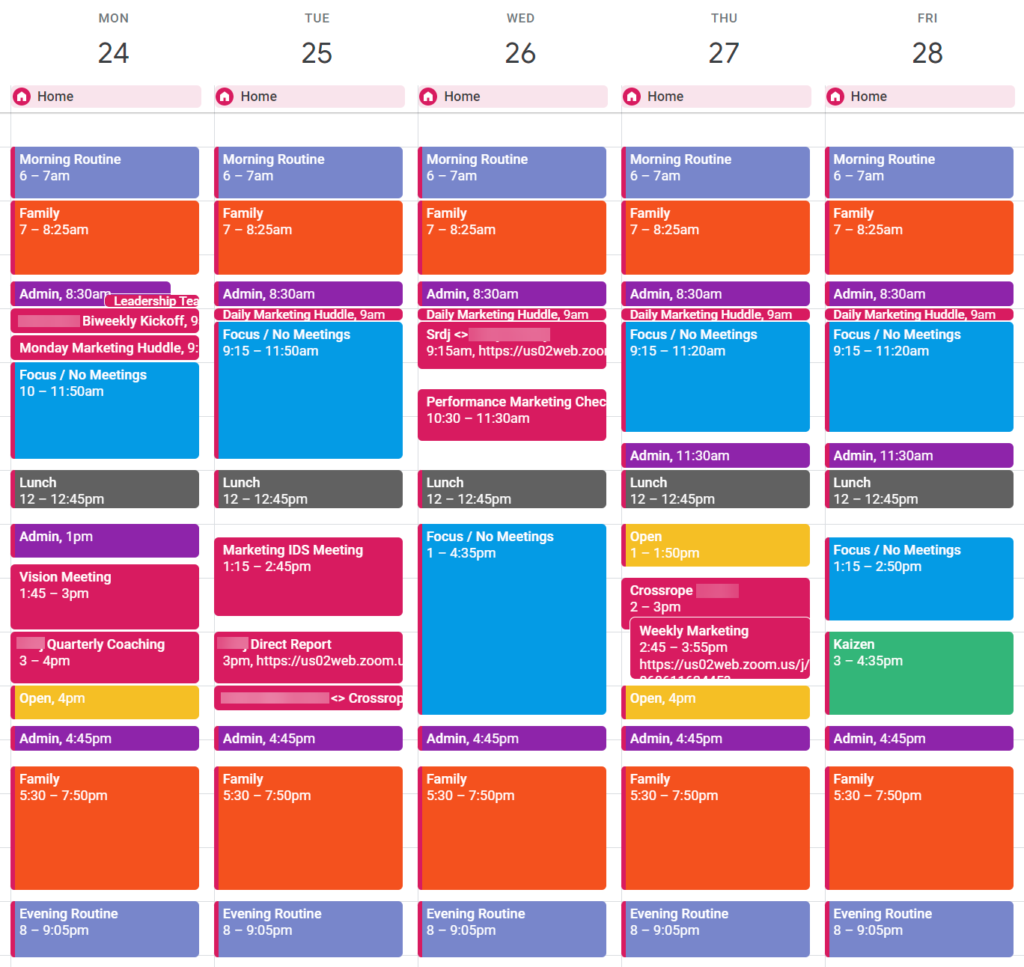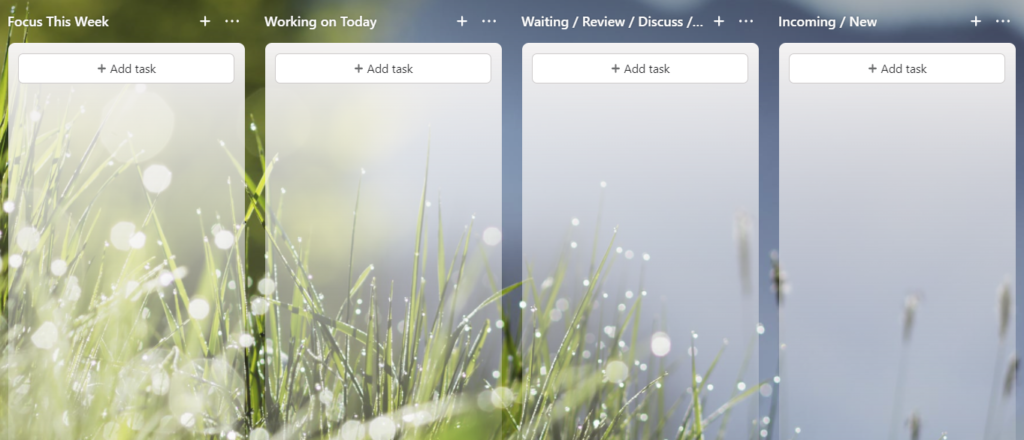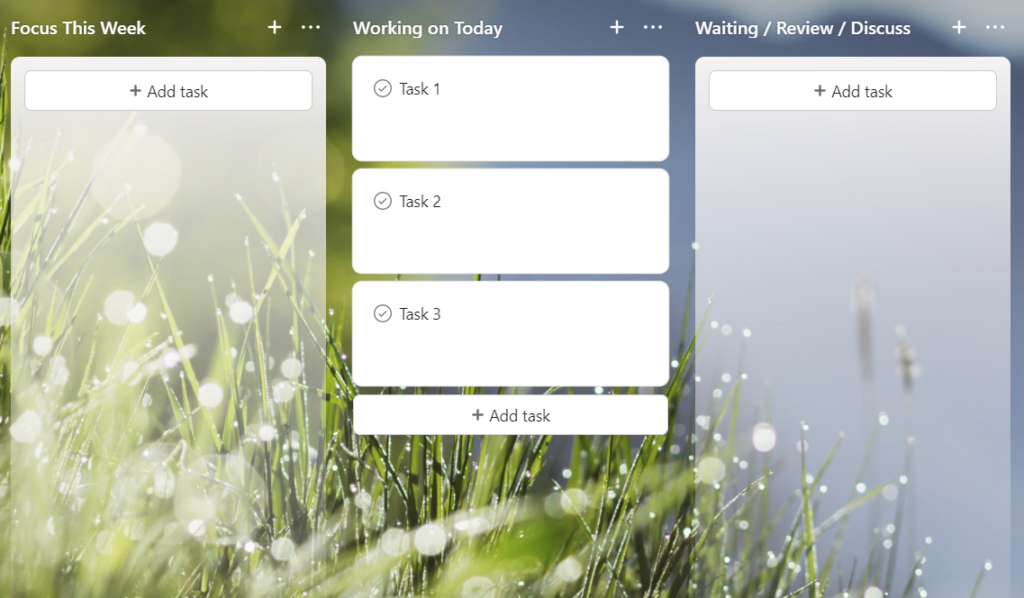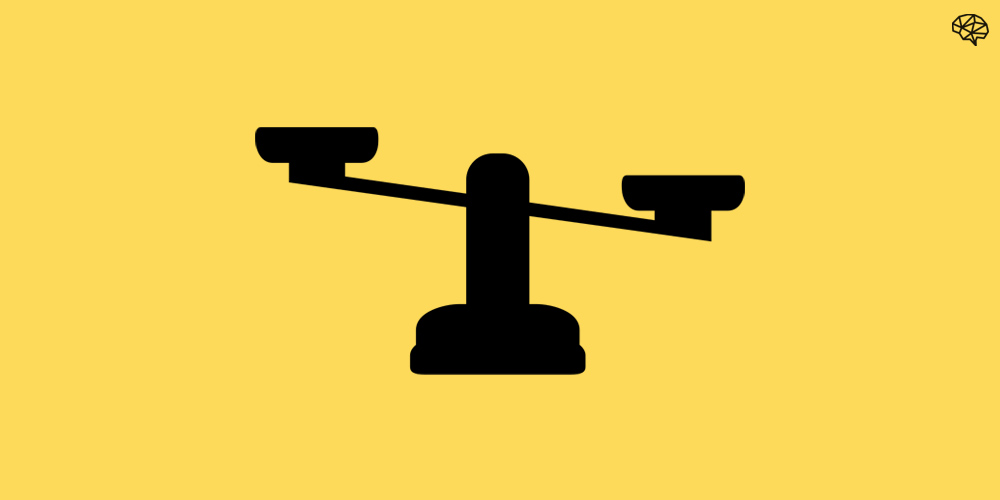Earlier this year, Cal Newport wrote a terrific article on the New Yorker where he shared his thoughts on the concept of a four day workweek.
He introduces the concept of slow productivity and concludes that while working fewer days has proven benefits, cutting back a workday may not be enough to curb the sharp rise in self-reported burnout we’ve seen over the past few years.
His reason is something we’ve all undoubtedly experienced – it’s not about how many hours we work but the volume of work we’re assigned at any given time. If you need to do five days of work in four days, what’s the point?
This is an issue very few teams are addressing. The volume of work – defined by Newport as the ‘total number of obligations we’re committed to complete’ – is on the rise. If we don’t learn how to manage the volume effectively, we’ll all eventually reach a threshold where the weight of all our commitments and responsibilities leaves us stressed, overwhelmed, and burned the hell out.
I’m here to share some strategies on how to manage a high volume of work. These are simple workflow improvements that have served me well as a leader, father, and writer where there’s never a shortage of things to get done.
Why work volume is on the rise
Before we can tackle the problem of volume, we need to understand why it’s happening. There are several factors contributing to the rise in work volume:
Rise of autonomy
In his article, Newport talks about the rise of autonomy in the twenty-first century workforce. It appears that more control over our work and time has ultimately led us to organizational chaos.
“If you labored as a Depression-era clerk, you had little control over what you did during your shift: you clocked in, you executed (or not) your assigned tasks, you clocked out. In a twenty-first-century office role, the situation is reversed. You now have almost total control of how you fill each minute. No one is asking you to clock in and clock out. They instead demand, in some ill-defined yet urgent sense, that you’re responsive and get things done. This autonomy has allowed modern knowledge work to evolve haphazardly toward an increasingly unsustainable configuration.”
Cal Newport, It’s Time to Embrace Slow Productivity
Autonomy is undoubtedly the backbone of knowledge work, but too much in the wrong places can create chaos and burden us with more work.
Knowledge workers (hey, that’s us) need autonomy – we need to be given clear objectives and the freedom to decide how we want to meet those objectives. What we’ve done, however, is expanded that autonomy into workplace organization. Knowledge workers are now also being asked to figure out how to organize, prioritize, and assign work, which is cognitively taxing. We end up spending more time organizing and less time doing important work.
Rise of delegation
Every business and leadership book talks about the importance of delegation. Delegate, delegate, delegate. Nearly every productivity system has a list of instructions for how to hand things off that aren’t the highest and best use of your time.
While delegating allows us to elevate to higher leverage initiatives (a good thing), we tend to forget that every task that is handed off lands on someone else’s plate. The more we delegate, the more volume we create for others.
Lack of task transparency
As we’ve transitioned to remote work, we now have even less transparency into our respective workloads. Gone are the days when we could see the workload piled up on Johnny’s desk and hold off on that new project we were going to ask him to help with.
We now have no idea what someone’s workload looks like which makes it easier for us to make new requests without a second thought.
Low cost, low friction communication
There was a time when a young fella would pop mail onto a cart and push it around the office to hand out messages to people. It was a slow but effective means of communication. Must’ve been a fun gig too.
Over the past few decades, we’ve seen digital communication tools take over the knowledge work sector. Today, we’ve reduced the cost and friction of communication to nearly zero. It now takes barely a handful of seconds for someone to send us a question or task request via Slack (often a loaded one).
CEO: Can you take a look at why our site rankings are down?
Me: (don’t say it, don’t say it, don’t say it)
Me: Sure, let me just remove everything else from my plate.
CEO: …
Reduced communicational friction not only contributes to the buildup of work volume, but it also forces us to keep all these new sporadic inputs logged somewhere (often in our mind where it only adds to our cognitive load).
Lack of personal organization
Unfortunately, our school curriculum never covered strategies for how to organize and prioritize work. We were just expected to figure it out. While some of us did, most of us never learned how to work effectively.
As a result, we find ourselves constantly juggling thirteen priorities at once. As new project requests come through, questions pile up that need answering, and little tasks mount up, our inability to organize and compartmentalize our work dramatically adds to our burdens. Oh, and meanwhile, our cultural unwillingness to say no to things that don’t align with our core objectives only serves to overflow the bucket.
When you couple a rise in autonomy with our inability to organize and compartmentalize our work, we end up with a workforce trapped in a never-ending state of stress and overwhelm.
We’re Overcomplicating Everything
We’ve come to this collective yet misguided agreement that anything worth pursuing by default has to be complex. So we overcomplicate and overengineer every single problem we face. We’ve come to believe that the 10-step solution is by default better than the 3-step solution and therefore add unnecessary tasks that add to the volume.
We’re (Too) Distracted
Lastly, we’ve been dealing with a higher volume of distractions than we ever have before and it’s wreaking havoc on our ability to focus and get important work done. Cognitive switching is slowing down our ability to execute. Without a way to manage our internal and external distractions, volume keeps building.
How to Deal With Volume
There are only two things we can do about volume: reduce the volume and manage the volume. If we can look more closely at each factor contributing to the problem, we can work backwards and put strategies in place to mitigate them. Good plan? Let’s go.
Reverse Piloting
The best place to start is with a cutting exercise. Before we even think about delegating something or putting a new organization system in place, we need to start by pruning down our list of initiatives.
We’re all very good at coming up with and trying new ideas (piloting), but we’re terrible at cutting back on initiatives (reverse piloting). It’s just not in our cultural DNA.
I believe every organization should do a quarterly reverse piloting exercise to cut back on the activities that are not driving results.
We can do this as individuals as well. Every few months, take a look at your long list of tasks. What can you pause for a month and see what effects it has downstream? What can you eliminate completely? You’ll find that a number of tasks may feel like they are worth doing, but only deliver slight improvements. We call these marginal initiatives that can build up over time, creating capacity issues. Identify these activities and cut them.
Increase workplace task transparency
Improving organizational (or at least departmental) task transparency can be achieved in a few ways.
The first and simplest way to increase transparency is to use and share calendars. While this does not give transparency down to the task level, effective use of calendars allows everyone on your team to see your plans for the week and thus optimize meeting times and work requests.

The second way to increase task transparency is to use a task management tool like Trello or Asana where everyone can go in and see all the work that’s in progress. This is popular with agile workflows where tasks are sorted in Kanban boards for everyone to visually see what each individual on the team is working on.
The third way to increase transparency is to implement asynchronous systems that streamline workflow. Let me explain with an example.
Sam is an in-house web developer for a fast-growing ecommerce startup. He’s struggling with the volume of work because he’s constantly getting bombarded with new site improvement ideas, CRO changes, copy change requests, etc.
These requests are coming in from all angles – email, Slack, meetings, carrier pigeons, etc. He spends way too much time getting everything logged and organized and it doesn’t help that he’s constantly getting pinged about the status of each request.
This lack of transparency creates havoc for Sam who now struggles to find time to actually get the important development work done. Nobody knows what Sam has on his plate. Nobody knows how their requests fit into the full development cycle.
Now image a different scenario: Sam uses a Google sheet where all new web development tasks are logged and everyone has access to it. The log shows what is currently being worked on, what’s next in the pipeline, and the status of each project.
Sam also built a Google form that connects to his sheet. He shares it with the team so they can use it to submit new tasks and ideas. Upon submitting a new task or idea, team members can identify the details of the request and when they need it done by.
With this new setup, Sam has drastically improved task transparency. People don’t need to reach out to him when they want to share a new idea, request a change, or ask about a status update. Instead, they open the log to see everything that’s queued up and they can use the form to submit new tasks and project. Sam is free to spend time on prioritizing and doing the important work.
When you increase workplace transparency, you can better control the pace at which volume builds up. When everyone can see what’s being worked on, it helps reduce the number of inputs and ensures the ones that do come through are more thought through.
Increase communicational friction with guidelines
We talked about the ease with which messages can be sent these days. While we may not be able to reduce friction completely (unless we bring the fella with the cart back .. can we?), we can set better communication expectations.
I’ve written about the importance of establishing organizational communication guidelines. What I’ve learned is it also helps manage work volume.
Here’s a little example: make it a rule that nobody is allowed to send a task or project request via Slack (or any other IM platform). Why? Well, many reasons. One, it’s distracting. Two, you don’t get sufficient context for what’s needed (requiring further back and forth messaging). Three, it puts onus on the receiver to log it appropriately so it doesn’t get missed. This is all taking away valuable time from the receiver.
The ideal solution is to have a form set up similar to Sam’s form above where people can submit requests that get logged automatically. Alternatively, email is a much better substitute for work requests because it’s less distracting, is less likely to get missed, can offer more details about the scope, and can be reviewed at a more ideal time.
Simple communication rules & guidelines like this can streamline the way work requests are sent and received and can ultimately help individuals and teams manage work volume more effectively.
Implement a better workflow
There’s only so much we can do to reduce the volume. Once we’ve cut back and put measures in place to curb the buildup, we need to learn how to manage the volume.
To help solve this problem, I’ve created a productivity system that any individual or team can use to improve the way they work. Let me show you some specific tactics that can help streamline your workflow.
Separate incoming tasks from current tasks
One of the common mistakes I see teams and individuals make is they don’t separate incoming work from their work in progress. When a new task or project comes through, it just gets added to the same pile. This is a mentally taxing way to operate and makes getting important work done difficult. So the first step is to separate your current tasks from your incoming ones.
In your Kanban workflow, you should have a ‘working on’ column with only the handful of tasks you’re currently focusing on and an ‘incoming’ column to log anything new that comes in. Any time new work is requested, it goes into the ‘incoming’ column where it can’t distract from what’s currently being worked on. See how it works here.

Remember, your brain is not great at storing material so you need a place where you can log anything that comes in for later processing. A weekly review will give you the opportunity to assess everything in your incoming column and assess priority.
Dedicate time for admin work
If you’re in a role where email is a frequent mode of communication (I know you are), it’s easy to spend all day in your inbox. A better strategy is to dedicate one or two blocks of time each day to process email and any other administrative tasks.
Personally, I spend 30 minutes at the start and end of the day to process email. For the rest of the day, the inbox is turned off.
That second point is critical – if you keep your inbox visible, you’re going to keep getting sucked back in. This is where organizational communication guidelines can come in handy again. If there is no expectation to respond to an email immediately, then it’s OK to keep your inbox turned off outside of your blocked off administrative blocks.
Leave buffer room in your calendar
If your calendar is filled with back-to-back meetings and commitments, you’ll find it difficult to navigate the pace of change in today’s hyperactive work environment. An impromptu meeting request or urgent task will come up that will derail your schedule.
One simple strategy is to leave sufficient buffer room in your calendar. Personally, I schedule a few ‘open’ blocks in my calendar which my team knows they can use to schedule impromptu meetings. I also use these blocks for any new urgent tasks that may require my attention that I hadn’t accounted for in the week.
Limit your work in progress
In Jim Benson’s fantastic book Personal Kanban, he talks about the effectiveness of limiting your WIP. In the traditional Kanban system, you have three columns: to do, in progress, and done. Your ‘to do’ column holds all the things you need to get done, your ‘in progress’ column (which I’ve labeled ‘working on’ in my workflow) holds all the things you’re currently working on, and done is done.
When you limit your WIP, you put restrictions on your ‘in progress’ column. For example, if you put a limit of three items in WIP, that means you can never have more than three items in your ‘in progress’ column. One item needs to be completed (or moved back to the ‘to do’ column) before another one can be added.

When you limit your WIP you reduce cognitive load. You allow your mind to focus only on three items at a time (instead of the never ending list of tasks that are still waiting to be done). This frees your mind to focus more deeply on the few tasks at hand.
Clarify the Problem
If you’re prone to overengineering every problem you face, the first thing to do is slow down. When you slow down, you create room to think and explore alternatives. We tend to overengineer solutions because we’ve got the itch to start tackling the problem right away when, in fact, we’re better off getting clear about the problem we’re solving with who we’re solving it for.
Question: What would this look like if it was easy?
Who are you solving the problem for? A colleague? A customer? A client? One of the best things you can do is have a conversation and get clarity about the problem you are solving and the array of solutions available. Sometimes, you’ll find there’s already an existing solution that requires no added work. Most times, you’ll realize that where you thought an elaborate solution was desired, a simple one would more than suffice.
Getting clarity is the equivalent of sharpening your axe before cutting down the tree. Spend the time up front to understand the problem, discuss the array of solutions available, and get clear on the desired outcome before you start tackling the problem.
Manage Your Distractions
If not managed properly, internal and external distractions can wreak havoc on our productivity. Read my guide on how to deal with distractions and put the necessary solutions in place.
Final Notes on Volume
In his article, Newport states that one of the challenges to solving for a high volume of work is that companies are hesitant to reduce it.
The fear is that by reducing the amount of work each employee is working on at any given time, it ultimately reduces the total amount of work an organization is able to complete and therefore makes the company less competitive.
This fear is irrational and unfounded. The truth is, when knowledge workers are chronically overloaded, it leads to a reduction in work quality, lower job satisfaction, and ultimately higher rates of burnout and turnover. This is not good for anyone.
If instead organizations supported their employees by putting better systems in place to reduce and manage the work volume, they would see an increase in work quality, a rise in job satisfaction, and a reduction in burnout and turnover.
This is how you beat the competition. This is how you do better work.
✌




